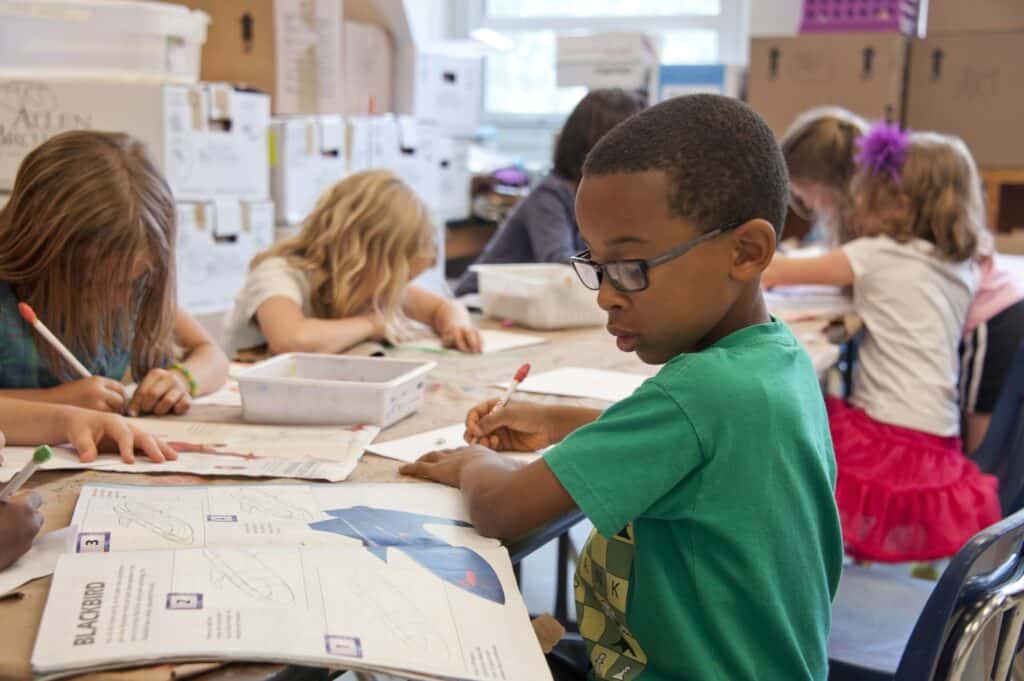Few milestones in life are as exciting as moving to a new country, but such a bold decision is not without its challenges, especially if you’re moving with young children in tow.
If you’re ready to start a new life for you and your family in the UK, one of your most important questions might be about the UK education system. What types of schools are there, and how will you secure places for your children? Here at Remitly, we know there can be a lot to manage, so we’ve put together this quick guide to schools in the UK.

Independent schools versus state schools
Looking at the UK education system in the broadest sense, there are two main categories of schools:
- Public schools
- Independent schools
Public schools comprise the vast majority of schools and are funded by the government, meaning children can attend for free. In contrast, independent schools do not receive money from the state and instead charge fees to the parents or guardians of their pupils. It is a somewhat confusing quirk of British culture that independent schools can be referred to as ‘private schools’ and ‘state schools’. However, the term ‘state school’ is usually reserved for very old, highly prestigious and elite independent schools such as Eton and Harrow.
Both state and independent school systems are divided into a primary and a secondary level for younger children. Independent primary schools are known as preparatory (‘prep’) schools.
Specific school types
When you look a little closer at the UK education system, you will see that schools can be divided into more specific categories. Here is an overview of the main types.
Community schools
These are state-funded schools that are overseen by local government authorities, are not affiliated with businesses or religious groups, and do not require students to pass entrance exams to attend. Such schools have to follow the national curriculum wherever they are located in the UK, whether in England, Wales, Scotland, or Northern Ireland.
Faith schools
As the name suggests, these schools are religious in character and are free to tailor their religious studies courses accordingly. Faith schools can be state-affiliated or independent, and when it comes to admission, they tend to prioritize children whose families practice the relevant religion. In addition to being given greater latitude in terms of religious instruction, state-run faith schools must follow the national curriculum.
Academies
Academies are similar to state schools in that they are state-funded and generally non-selective, meaning that students of all academic abilities and achievements can attend. The main difference is that academies are free to do things their own way, both in terms of what they teach and how they teach it. They do not have to follow the national curriculum and can set their own term times. Academies can be supported by businesses and faith groups.
Grammar schools
These are public secondary schools that select their students through the ’11-plus’, an exam usually taken in the last year of primary school. The 11-plus tests math and English language skills, as well as a child’s ability to think constructively and solve problems. Because competition for grammar schools is so intense, parents and guardians often arrange private lessons to prepare their children for the 11-plus exam.
Application for school places
In the UK education system, children usually start full-time primary education between the ages of four and five and secondary education between the ages of 11 and 12. The dates and procedures for enrolling children in school will vary depending on where you live and what type of school it is.
Independent schools have their own application procedures, so you should contact them directly to see what this involves. In the case of state schools, parents and guardians in England, Wales, and Northern Ireland will need to apply online via their local authority’s website (or the Education Authority website in Northern Ireland).
As part of the application process, you will be able to enter a list of your preferred primary or secondary schools. In order not to miss the application deadline, it is important to check exactly when online applications open and close in your region for children starting primary or secondary school next year.
Things work a little differently in Scotland, where you do not submit a preference list. Instead, your local authority will decide which school your children will attend based on your location (‘catchment area’). It is possible to request an alternative school, but there is no guarantee that your request will be accepted. Depending on how your local Scottish authority works, the enrollment procedure may be fully automatic, and you will only receive a letter telling you which school has been chosen. Check your local authority’s website to be clear about the procedure in your area.

How to choose schools
It is critical to do some homework before submitting school choices, and in particular to look at the following.
Audit reports
For an overview of how well schools in your area are performing, you can check the latest official inspection reports. These are carried out by Ofsted in England, Estyn in Wales, Education Scotland in Scotland and the Education and Training Inspectorate in Northern Ireland. The reports will touch on everything from the quality of teaching to pupils’ attitudes and staff morale. You can also visit schools on designated open days to see what the schools look like and get to know the teachers.
Admission criteria
Although most schools are not officially ‘selective’ when it comes to applications, there will, of course, be a limited number of places in any given year. Popular schools will be oversubscribed, so you should be clear about how they choose which children to accept. You will be able to read their selection criteria on local authority websites or on the schools’ own websites. Many schools will give priority to children who live close to the school or who already have a sibling at that school. If you live quite far away from a very popular school, it may not be worth putting it on your preference list. You can select schools where you are likely to do better, even if they are not your ‘ideal’ choices.
Required documents
It is important to be clear about what documents are required with your application. These will include proof of your address, such as recent utility bills, and proof of your child’s date of birth, such as a birth certificate or doctor’s letter. Some schools may also ask you to complete a Supplementary Information Form (SIF) to provide extra information. For example, a Catholic school’s SIF may invite you to discuss your religious practices, where you go to church and when your child was baptized.
Coming to the UK with school-age children
What happens if you come to the UK with children who are already in primary or secondary school? In this case, you will need to go through what is called the “in-year” admission route for your children to enter the UK education system. This usually involves an application through your local authority’s website, but some schools need to be contacted directly. The same general advice applies to looking at schools’ inspection reports and researching their admission criteria before making your in-year application.
